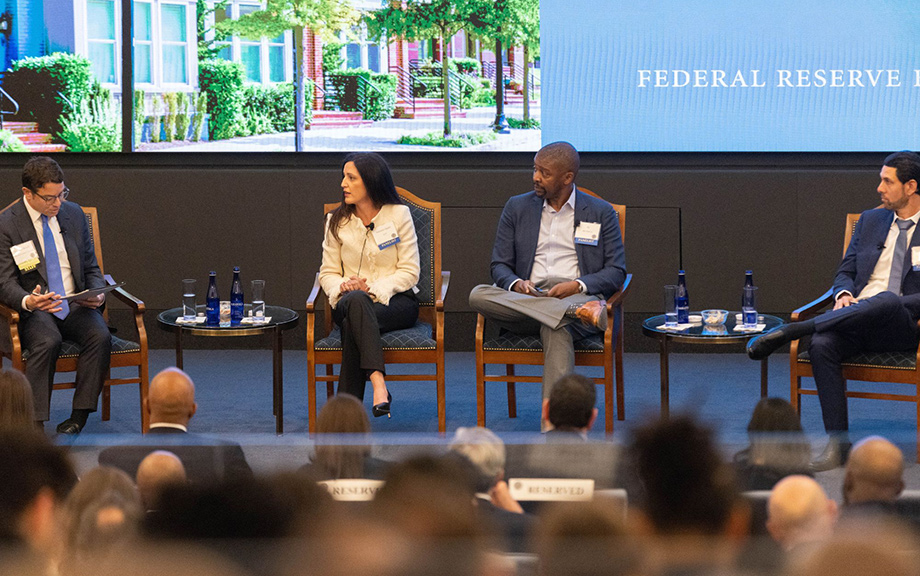
The New York Fed’s Community Development team is researching what private investments in affordable apartments mean for the supply of affordable rentals and the rents tenants pay. As part of that work, the team published a case study in March based on a survey of managers of private investment vehicles, which found that respondents raised a median $300 million in equity for affordable-housing private investment vehicles since 2017. The team also brought together private investors, affordable-housing advocates, and experts in the field for an in-person event on March 27, 2023.
As part of the case study, and as highlighted at the event, one of the themes among stakeholders is the need to learn more about how regulators treat public welfare investments. The public welfare investment provision of the Federal Reserve Act authorizes state member banks to “make investments directly or indirectly, each of which is designed primarily to promote the public welfare, including the welfare of low- and moderate-income communities or families (such as by providing housing, services, or jobs), to the extent permissible under State law.” To support understanding of the public welfare investment provision, the Community Development team worked with colleagues at the Office of the Comptroller of the Currency (OCC), the Federal Reserve Board, and the Federal Deposit Insurance Corporation to develop a Q&A section as a reference in the case study.
This reference was designed to be a practical guide to making investments under the public welfare provision. For instance, in the Q&A, the OCC wrote that, for investments in real estate to be permissible under the provision, “the real estate must be located within a geographic area or neighborhood that receives assistance under or is covered by, for example, the U.S. Department of Housing and Urban Development’s Community Development Block Grant (CDBG) program.”
At the event, Adam Galowitz, managing director of tax-advantaged investments at State Street Bank & Trust Co., said the Q&A was especially useful. He said he found it both helpful and an illustrative guide to the complex regulatory climate perspective investors in affordable housing face.

Here are other highlights from the event:
- Antonio Marquez, principal and managing partner at Comunidad Partners, talked about how the company invests in the economic advancement, education, and health and wellness of its tenants. Comunidad works with nonprofit Veritas Impact Partners to deliver programs to tenants, including free telehealth services, virtual fitness classes, after-school programs, financial literacy and credit building workshops, tax assistance, job placement, and workforce training.
- Noelle St.Clair Lentz, CEO and Managing Director of Allivate Impact Capital, talked about a project the firm invested in located in the Sharswood neighborhood in North Philadelphia, where the median family income is $18,875 and the unemployment rate is 16%. The project, which included $750,000 in community funding, created 98 units of affordable housing in a development that also included a grocery store, an urgent care center, and the neighborhood’s first bank branch.
- Speakers including Barika Williams, executive director of the Association for Neighborhood & Housing Development, and Bob Simpson, president of the Multifamily Impact Council, talked about how working with tenants to improve their families’ financial health also improves the financial health of the buildings landlords own.
Watch a recording of the event, and learn more about the case study published by the New York Fed.
For more information on the New York Fed’s Community Development work, sign up for the Fed & Main newsletter.
Ellen Simon is a corporate communications specialist in the Communications and Outreach Group at the New York Fed.
The views expressed in this article are those of the contributing authors and do not necessarily reflect the position of the New York Fed or the Federal Reserve System.










